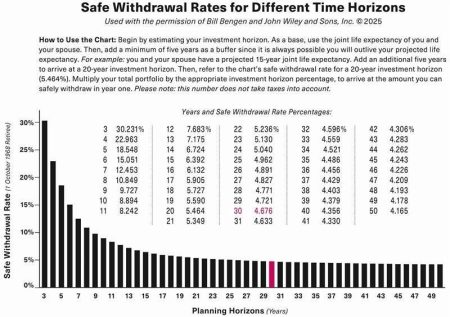Summer tends to be the slow season. Many people take time off to recharge and businesses slow down or work truncated hours.
In the investing world, I have found that the summer is a wonderful time to revisit some key personal finance areas. Periodically reviewing your finances can help ensure that you are on track to achieve your goals and minimize the chances of any costly oversights.
Below are 10 areas worth assessing and adjusting where appropriate.
1. Review your cash flow: Gathering your latest bank statement and credit card bills to review line by line is not the most glamorous task. However, taking a few hours to go through this process at least once a year is foundational to ensure that you are making the most of your money. This is a great time to cut wasteful spending, like memberships and subscriptions that you don’t use or assess discretionary spending to determine if there are any activities, such as eating out, car leases, or any other financial outlays that you’d like to minimize.
Freeing up cash from unnecessary expenses can give you the flexibility to spend more on areas that are more meaningful for you, like family, vacation, or making necessary home improvements. Alternatively, if these extra funds are not needed for expenses, they can be invested for your future.
2. Reassess your debt: If you have debt, it’s a good idea to review it from time to time. There may be opportunities to consolidate it or possibly transfer the balance to a 0% promotional opportunity even in this high-interest rate environment. There is no reason to pay 15-20% on credit card debt if you can avoid it.
3. Bolster Emergency Fund: Tariffs and wars have been in the headlines nonstop over the past few months. The unfortunate consequence of these developments may lead to a temporarily slowing economy and perhaps job. Now would be a good time to ensure that you have an adequate emergency fund. A rule of thumb is 3 to 6 months’ worth of expenses, though you may consider keeping more money in cash depending on your situation. It’s hard to plan for unexpected job loss and prolonged unemployment, however, a robust emergency fund can significantly mitigate that risk.
4. Streamline your investments: Tax season was not too long ago, and you may still have nightmares about how hard it was to gather all your 1099s to send to your accountant. If tax season is a cumbersome process every year, it makes sense to consolidate your investments, where appropriate, in order to organize your finances. Not only will this make tax time next year more seamless, but it will also allow you to better manage and track your investments by having all your money at one firm.
You should also assess if you have a tax inefficient investment portfolio. Indications of inefficiency include high turnover within your portfolio, with many trades being placed that may potentially lead to a higher tax bill. Additionally, if you were issued several K-1s this may delay your tax filing.
Now is a good time to reconsider these suboptimal tax holdings and determine if you can implement your investment strategy more tax efficiently. Streamlining your investments may provide far fewer headaches next tax season.
5. Plan for Future Tax Seasons: It’s worth considering tax-loss harvesting and proper asset location strategies to potentially help with future taxes.
Tax-loss harvesting involves selling securities at a loss to help offset taxes owed from capital gains in taxable investment accounts. Even though the market has appreciated since last year, there still may be legacy losses that have been sitting in your portfolio for years. It may be time to put these losses to good use by using them to offset gains and then reposition the cash into more sensible investments.
Additionally, spending time to evaluate your “asset location” will also help in tax efficiency. Asset location (not to be confused with asset allocation) is a strategy where investors intentionally choose where they park their investments to maximize their tax benefit. This includes putting more tax inefficient investments into tax advantaged accounts, like 401(k), 403(b), 529 college savings accounts, and HSAs, to name just a few.
6. Analyze pay stubs: In line with the previous point, an important step to maximize your tax benefit is reviewing your paystub. There are various benefits available through your employer, including an FSA (Flexible Savings Account), HSA (Health Savings Account), and 401(k) with a possible match. It may be worth sending a short e-mail to your colleagues in HR to understand all the available tax advantaged opportunities. Why not take full advantage of all the benefits and perks that your employer has to offer?
7. Put excess cash to work: Inertia is one of the biggest obstacles to financial success. The inability to make decisions, and act, when necessary, can impact various aspects of personal finance. One example of imprudent inertia is sitting on excessive cash instead of investing it. Holding too much cash ensures that you are losing money due to inflation.
You should invest any excess cash not needed to pay your expenses or emergency fund. This will more effectively grow your nest egg. Automating the process of contributing to your investment accounts will remove emotion and procrastination from your investment process.
If you have extra cash that you will need in several years and are not comfortable investing it in the market, it should also be moved out of your checking account and into a money market account. As of today, money market funds are still paying around 4%. That’s a pretty attractive return for effectively sitting in cash.
8. Take insurance coverage inventory: At each stage of life, there are different types of insurance coverage that a family may require. For example, having kids may precipitate a need for more life insurance coverage. On the other hand, when your kids move out of the house and become self-sufficient, you may not need as much life insurance coverage but may need to consider your long-term-care insurance options. Taking annual inventory of all your insurance needs, including life, disability, long-term care, umbrella, auto, home, renters, and others, is a worthwhile exercise. It helps confirm that you have adequate coverage. It also will allow you to eliminate insurance that is no longer necessary, which will free up cash flow to spend on other areas of your life.
9. Review your beneficiaries: Doing a quick scan every year of the beneficiaries named on all your retirement accounts and insurance policies can save a lot of headaches and heartache later. When an account or a policy has beneficiaries attached to it, those assets pass outside of one’s will. In order to ensure that your money is going to the people that you want upon your death, it’s worth reviewing your beneficiary designations periodically. The last thing anyone wants is the proceeds from these accounts going to an ex-spouse.
10. What has changed over the past year? In life, things change over time – our goals, financial situation, family dynamics, career, and much more. Take a moment to reflect on whether any significant changes have occurred in your life over the past year. These changes may require updates to your investment strategy or financial planning considerations. If anything has changed, reach out to your financial advisor in order adjust your strategy accordingly.
In conclusion, the summertime elicits thoughts of swimming, BBQing, and vacationing. It does not seem to stir up images of reviewing financial statements. However, taking advantage of this slower time of year to work through this list can help tie up any loose ends in your finances. This process will allow you to enter the more hectic Fall season with the peace of mind knowing that your finances are in order.
Securities offered through Kestra Investment Services, LLC (Kestra IS), member FINRA/SIPC. Investment Advisory Services offered through Kestra Advisory Services, LLC (Kestra AS), an affiliate of Kestra IS. ParkBridge Wealth Management is not affiliated with Kestra IS or Kestra AS. Investor Disclosures: https://www.kestrafinancial.com/disclosures.
Read the full article here









